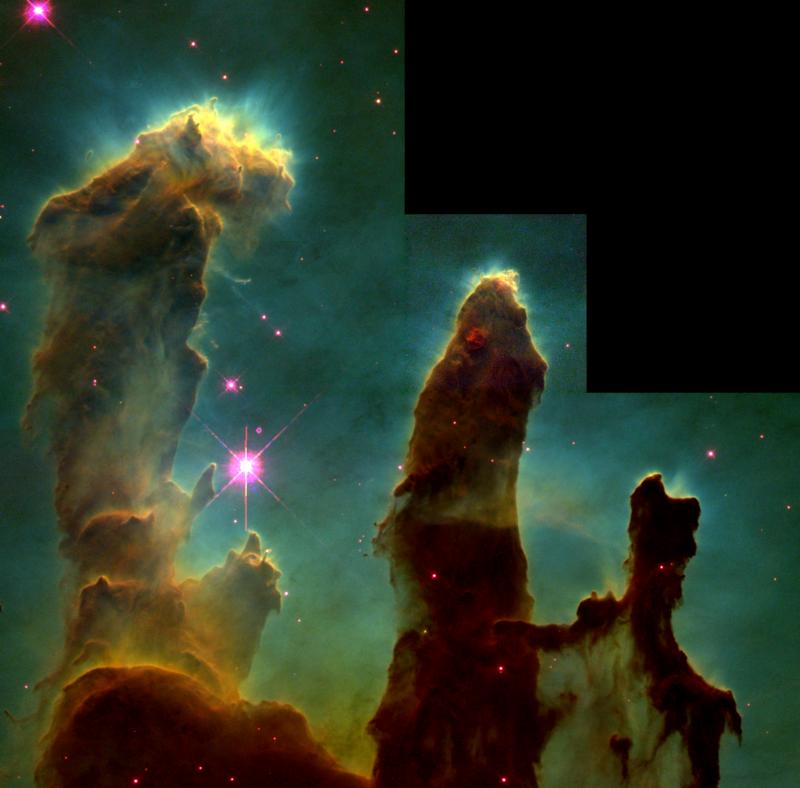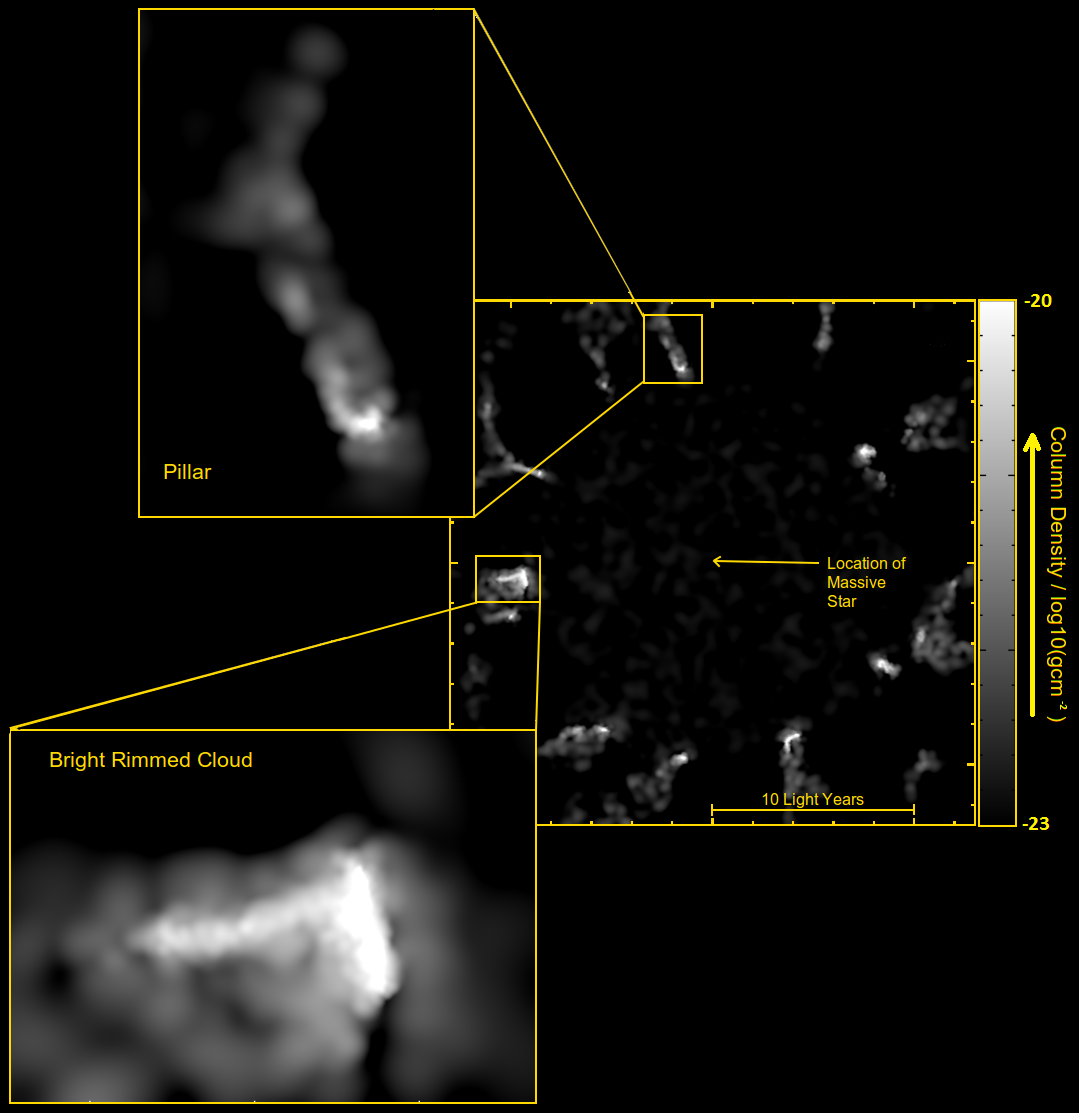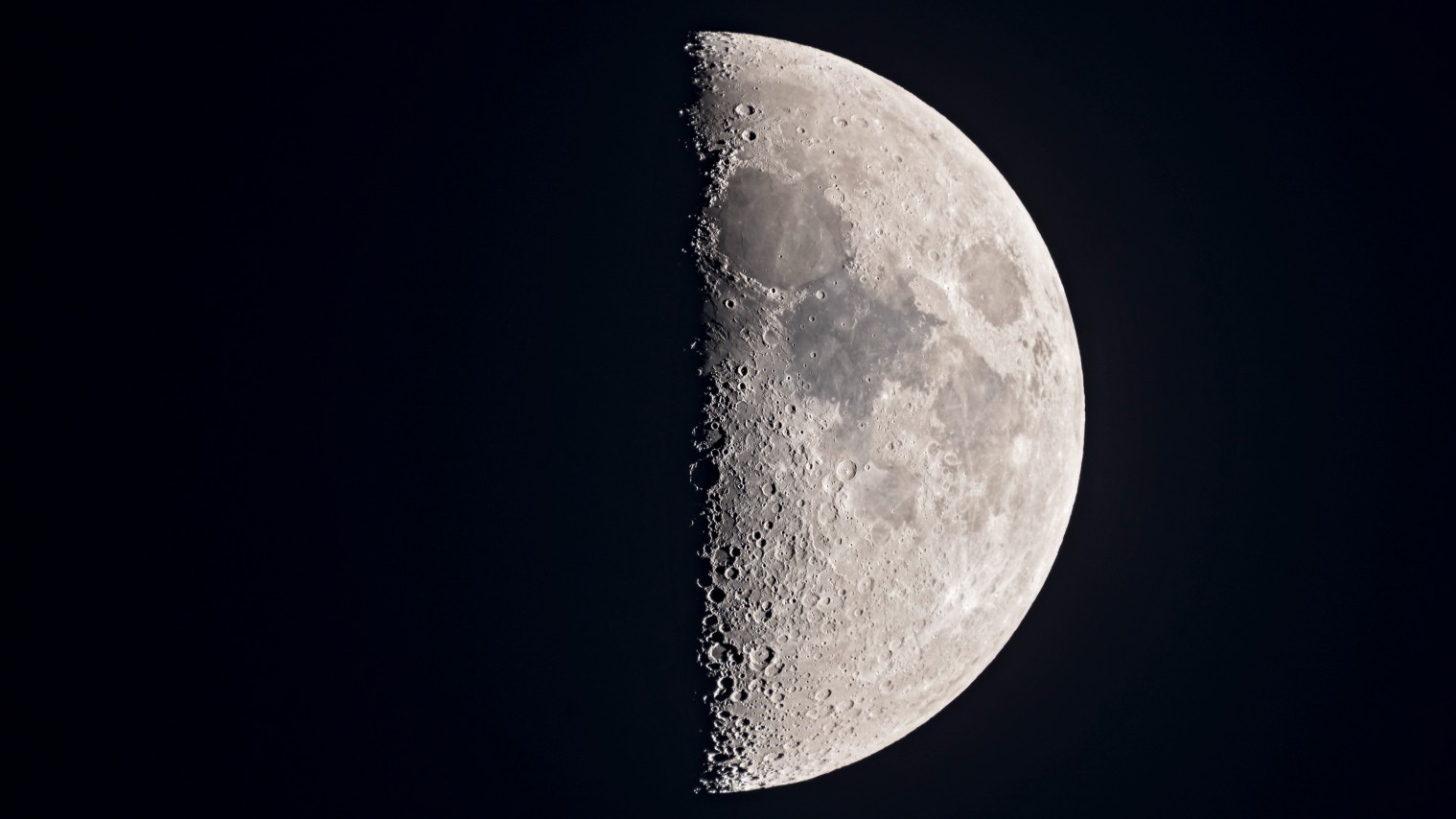Hubble Telescope's 'Pillars of Creation' Remade in Computer Simulation

An astronomer has recreated the famous "Pillars of Creation" using a computer.
In 1995, NASA's Hubble Space Telescope trained its gaze on a stellar nursery inside the Eagle Nebula, a billowing could of gas and dust about 7,000 light-years from Earth. The resulting image, dubbed "The Pillars of Creation," ranks among "Earthrise" and the "Pale Blue Dot" as one of the most iconic space photos of all time.
Scientists think the "pillars" in the image — known as "elephant trunks" — formed as cooler interstellar gas was worn away by intense radiation and powerful winds from nearby massive stars, known as O-type stars.
O-type stars are more than 16 times more massive than the sun and their surface temperatures climb over 54,000 degrees Fahrenheit (30,000 degrees Celsius). Some scientists have argued that O-type stars can drive star formation as they spawn expanding bubbles in the cloud and compress the surrounding gas.
Scott Balfour, an astronomer at Cardiff University, wanted to see what would happen when a massive O-type star forms in a cloud of gas, so he condensed 1.6 million years of cosmic phenomena into several weeks of computing time for his simulation.

"The model neatly produces exactly the same kind of structures seen by astronomers in the classic 1995 image, vindicating the idea that giant O-type stars have a major effect in sculpting their surroundings," Balfour said in a statement.
His simulation showed that the bubble from an O-type star could unfurl in one of three different ways: it could expand infinitely; it could grow, shrink a little and then remain static; or it could expand only to contract back to the center of the cloud. The second scenario was the only one that led to abundant star formation in the simulation, Balfour said.
Get the Space.com Newsletter
Breaking space news, the latest updates on rocket launches, skywatching events and more!
"If I'm right, it means that O-type and other massive stars play a much more complex role than we previously thought in nursing a new generation of stellar siblings to life," Balfour said.
Balfour was scheduled to present his results today (June 26) at the National Astronomy Meeting in Portsmouth, England.
Follow Megan Gannon on Twitter and Google+. Follow us @SPACEdotcom, Facebook or Google+. Originally published on Space.com.
Join our Space Forums to keep talking space on the latest missions, night sky and more! And if you have a news tip, correction or comment, let us know at: community@space.com.

Megan has been writing for Live Science and Space.com since 2012. Her interests range from archaeology to space exploration, and she has a bachelor's degree in English and art history from New York University. Megan spent two years as a reporter on the national desk at NewsCore. She has watched dinosaur auctions, witnessed rocket launches, licked ancient pottery sherds in Cyprus and flown in zero gravity on a Zero Gravity Corp. to follow students sparking weightless fires for science. Follow her on Twitter for her latest project.
